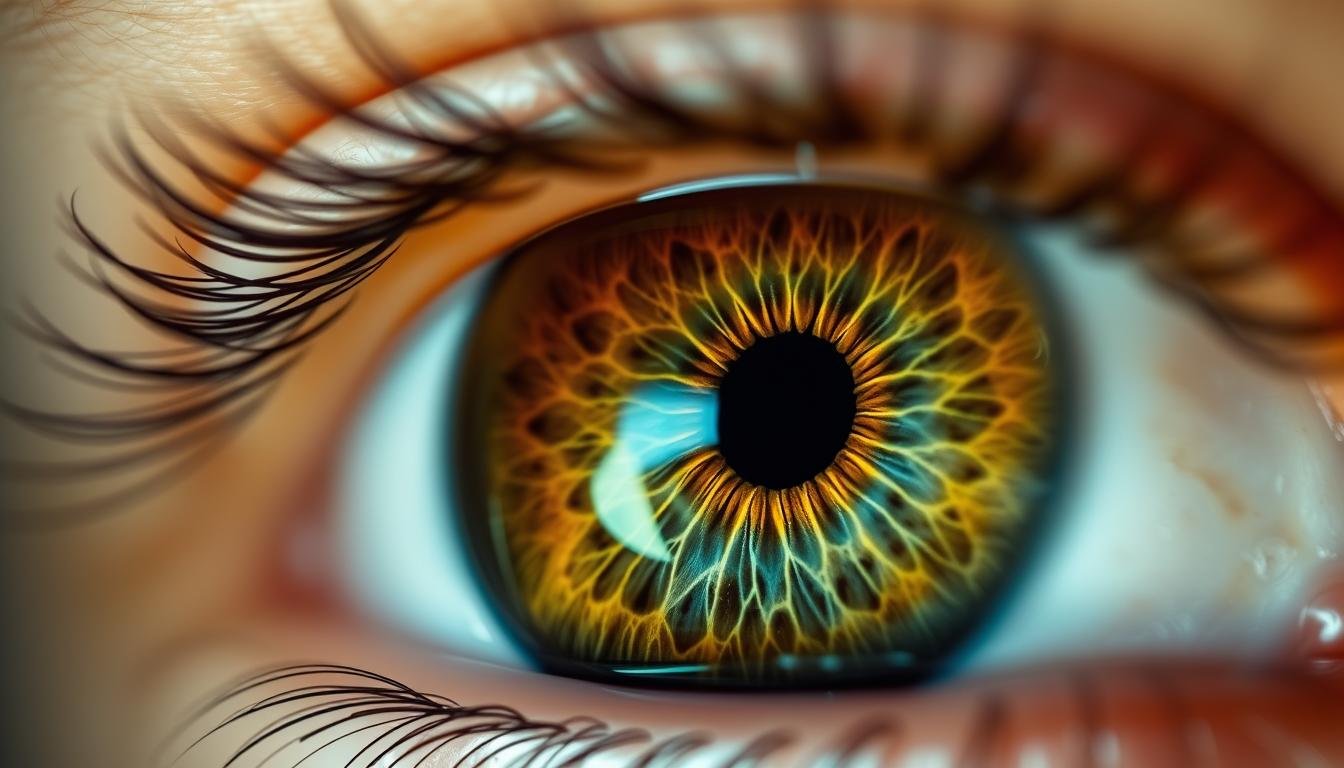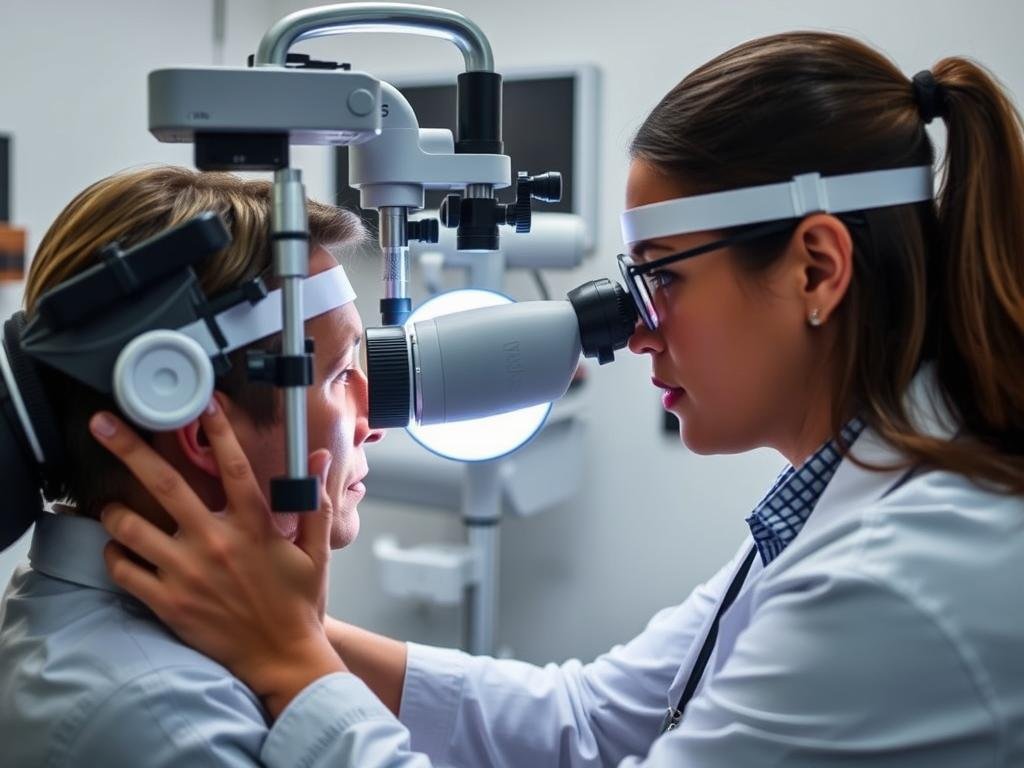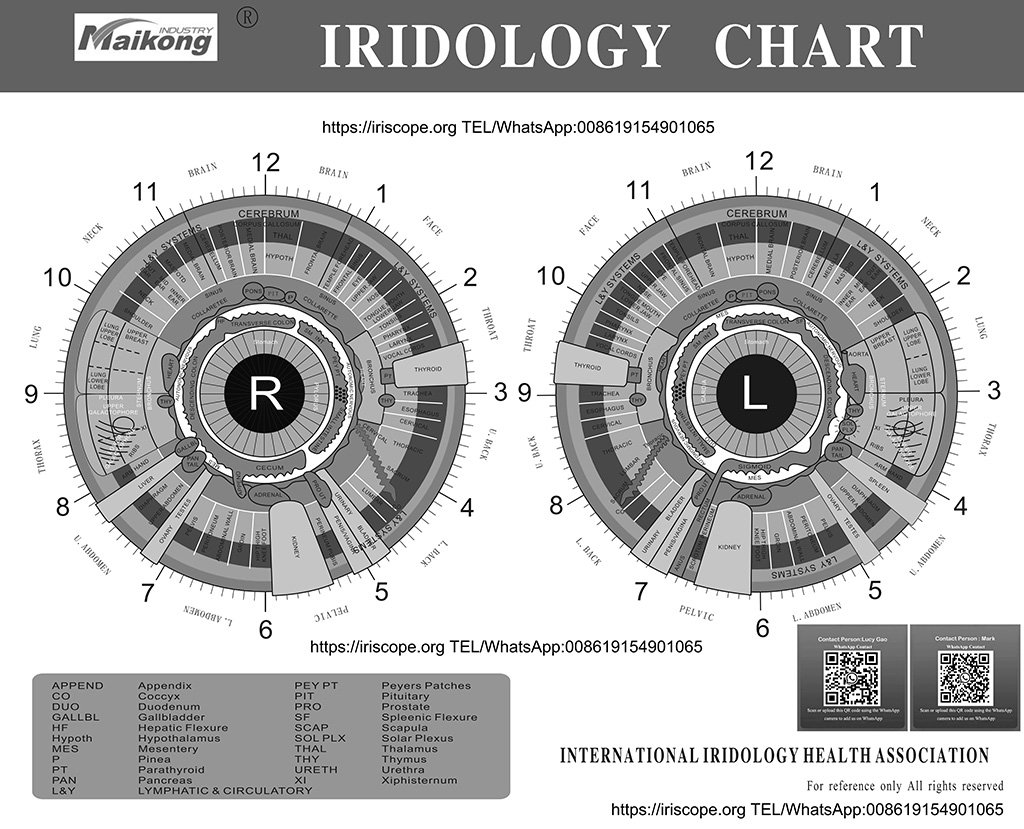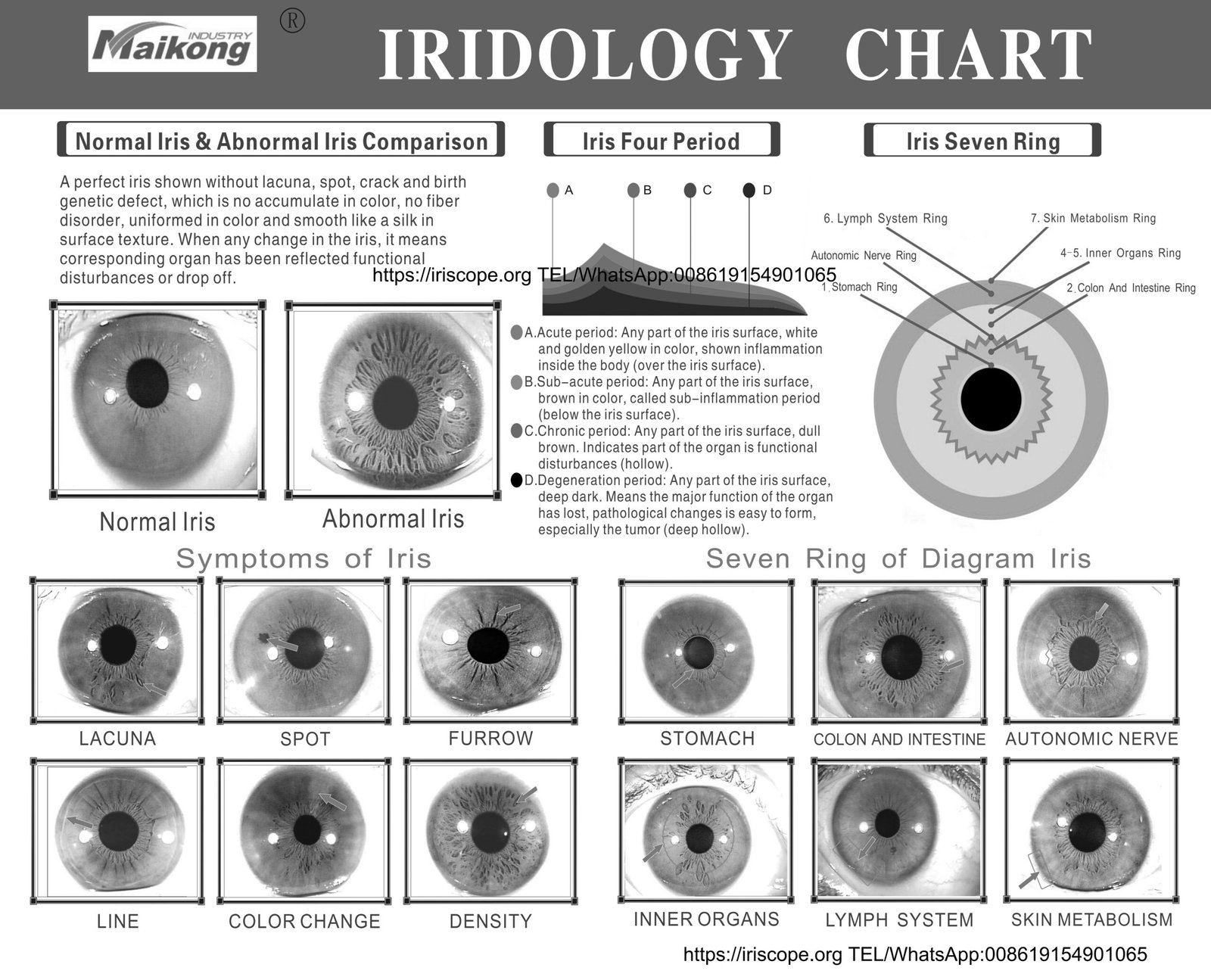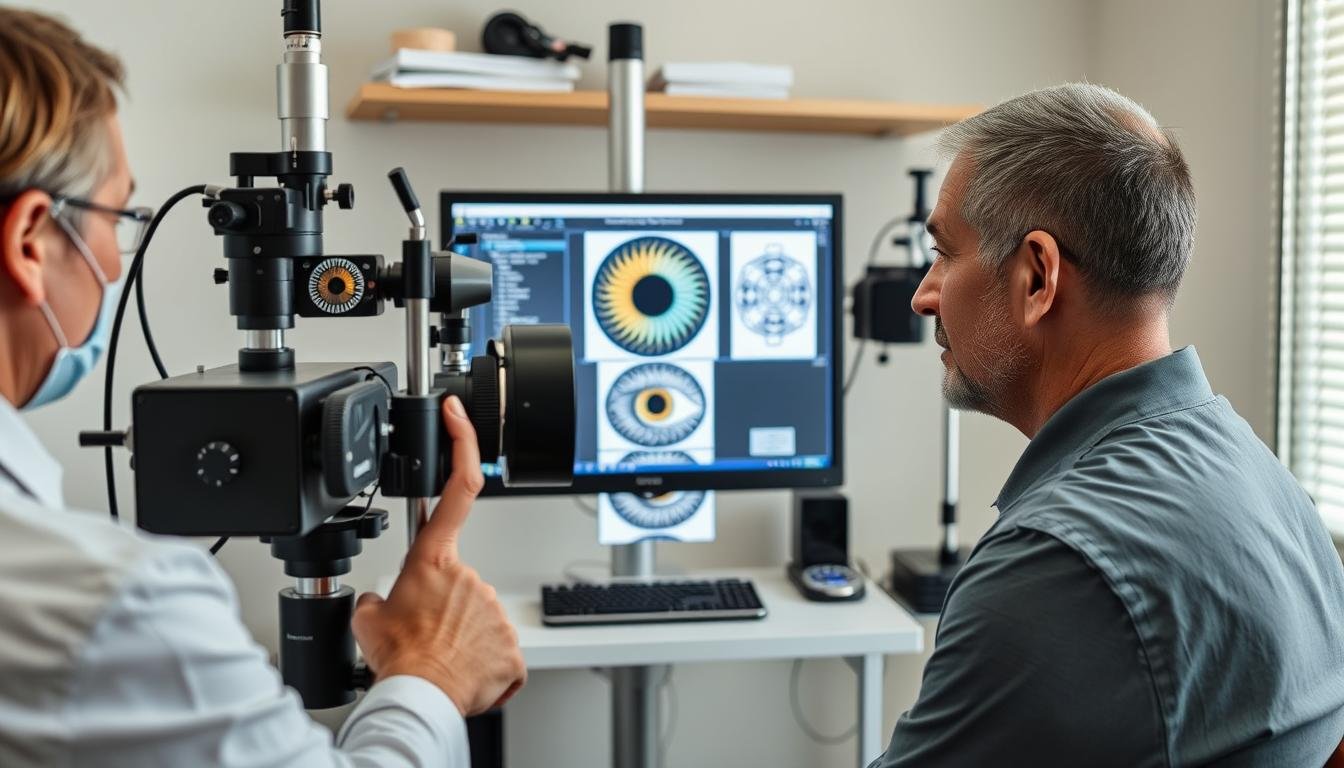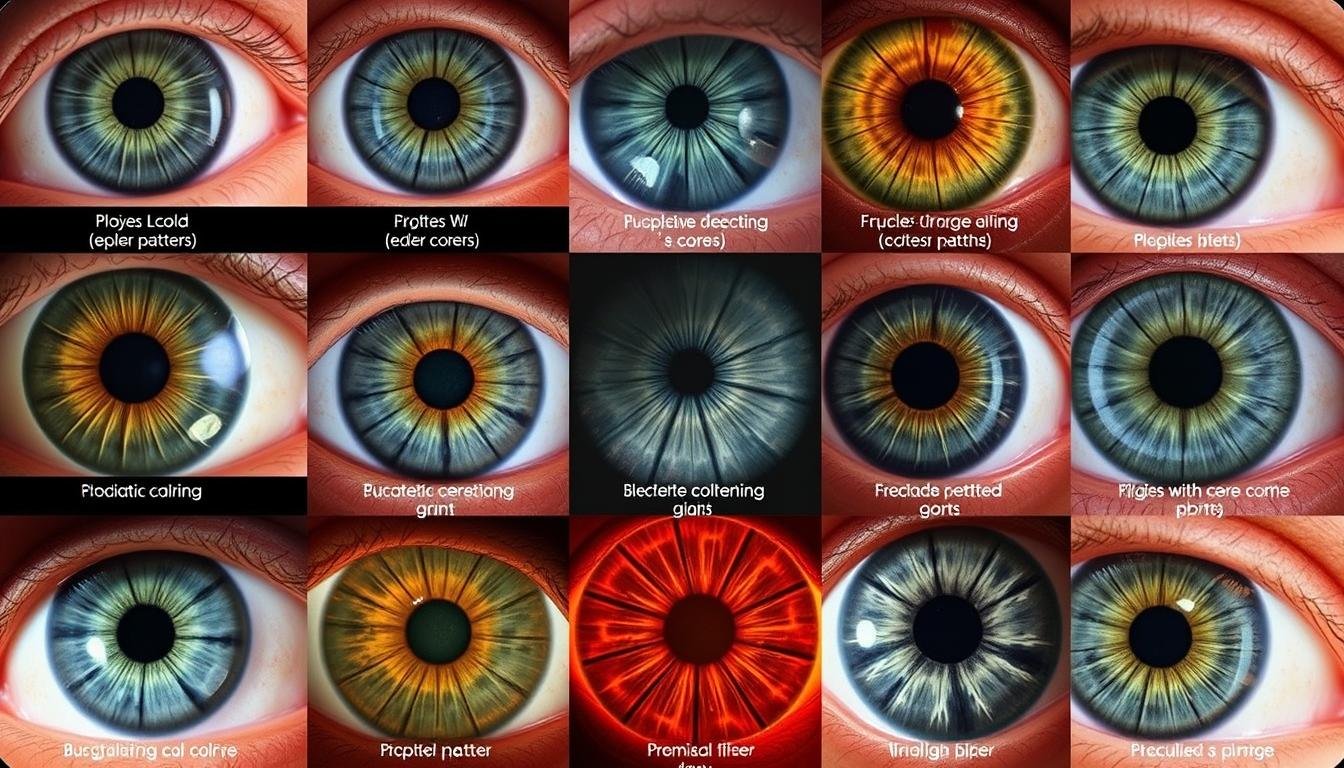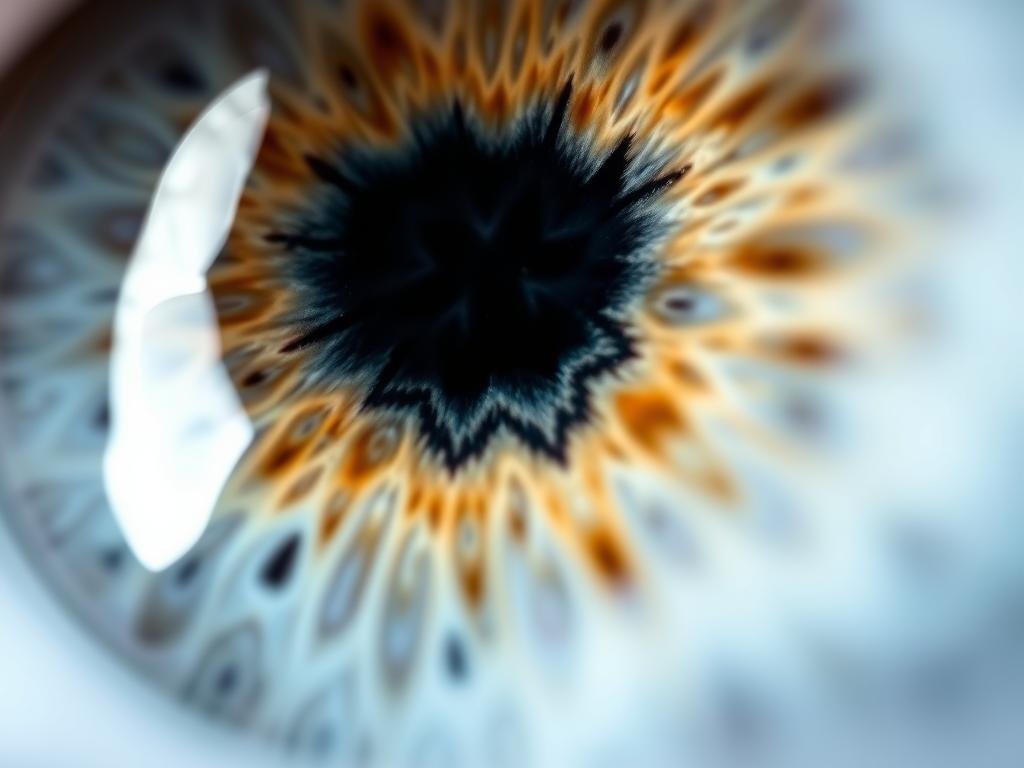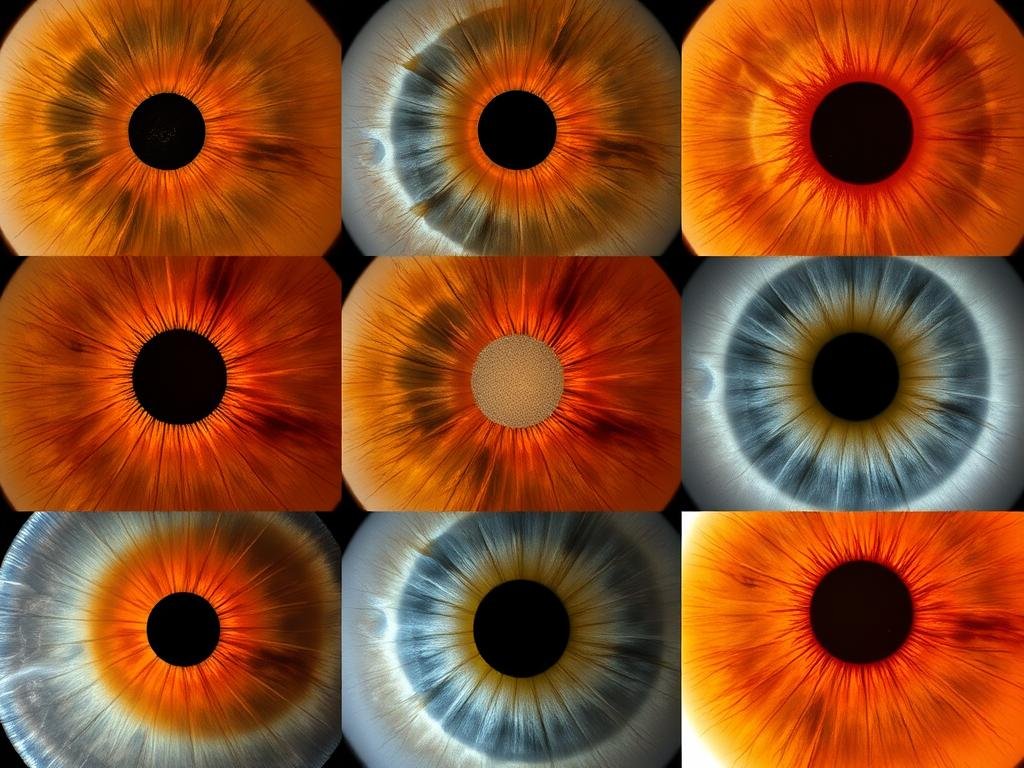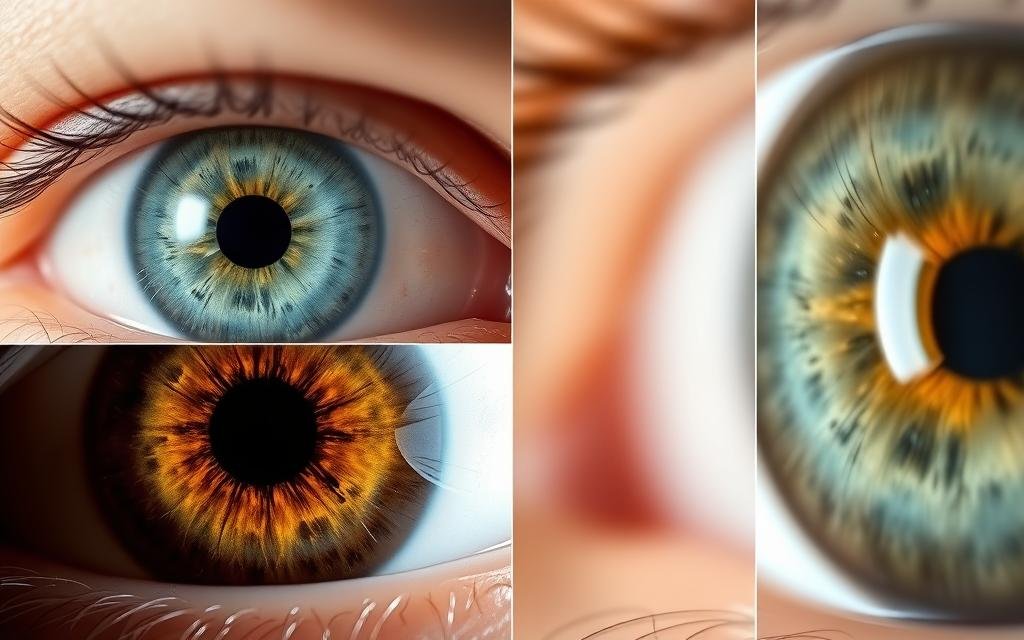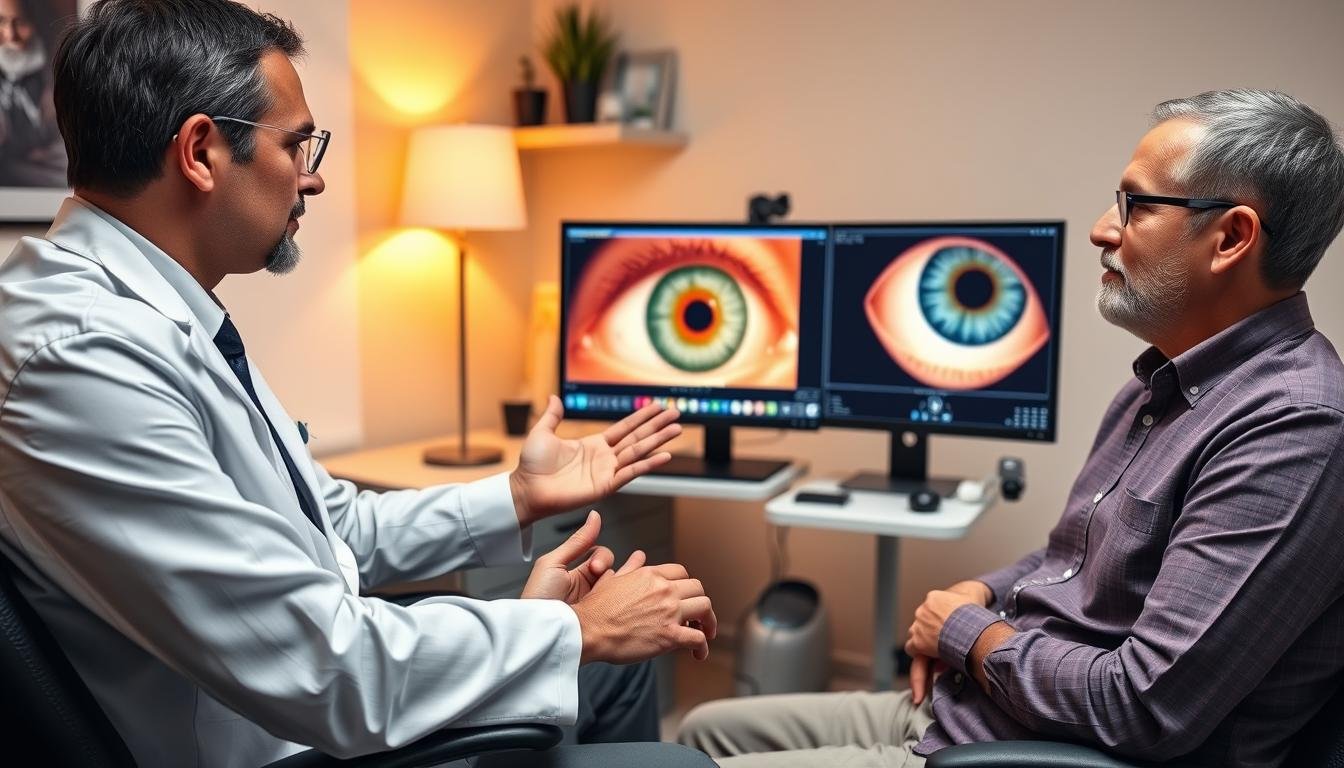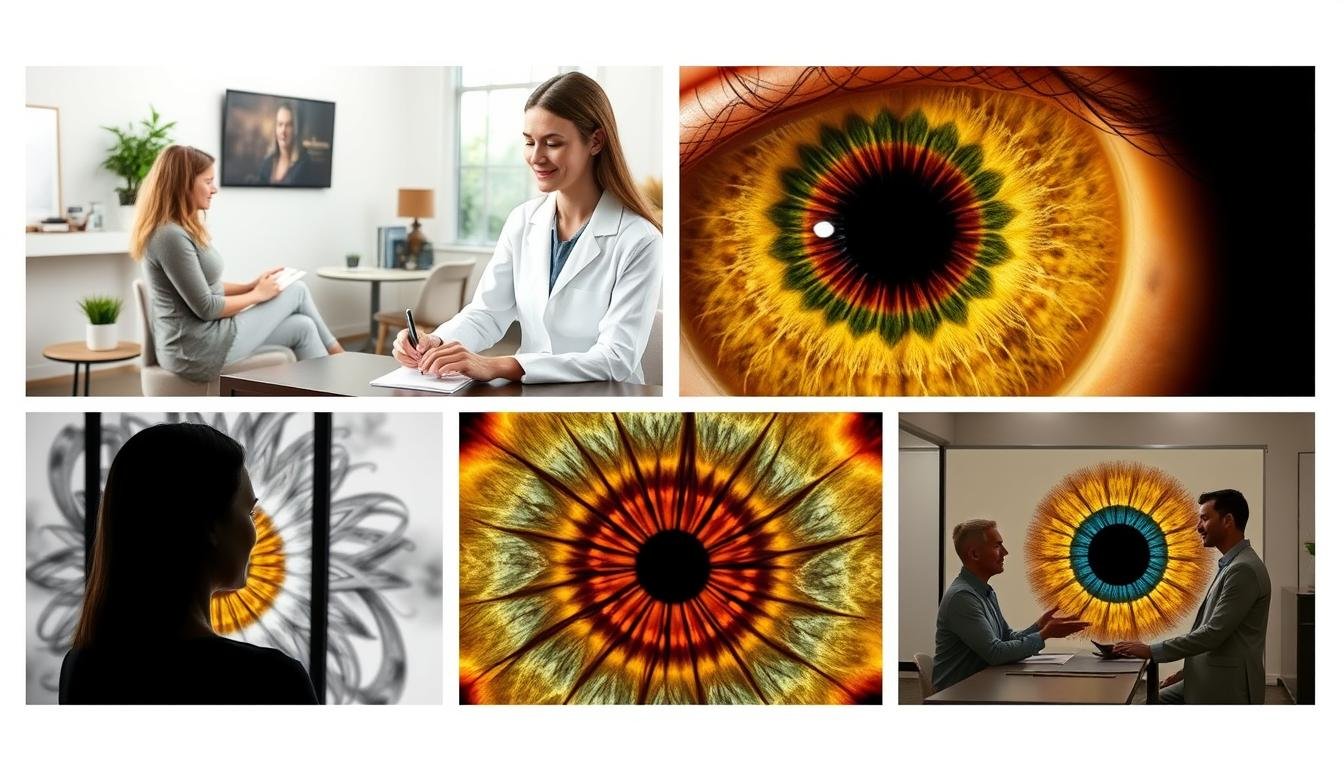The eyes have long been called the windows to the soul, but what if they could also be windows to your health? Diagnóstico da IRIS de iridologia is a fascinating alternative health practice that suggests the patterns, colors, and characteristics of your iris—the colored part of your eye—can reveal information about your body’s health and potential areas of concern. While conventional medicine approaches this practice with skepticism, iridology has gained popularity among those seeking holistic health insights.In this comprehensive guide, we’ll explore the principles behind iridology, its historical roots, how practitioners use it today, and what science has to say about its effectiveness. Whether you’re curious about alternative health practices or considering iridology as part of your wellness journey, this article will provide you with a balanced understanding of what iridology can and cannot tell you about your health.
The intricate patterns of the human iris that iridologists study for health assessment
O que é Diagnóstico da IRIS de iridologia?
Iridology is the study of the iris, the colored part of your eye, to identify potential health concerns and constitutional strengths and weaknesses. Practitioners of iridology, known as iridologists, examine the patterns, colors, and other characteristics of the iris to gain insights into a person’s overall health condition.

An iridologist conducting an iris examination using specialized equipment
Unlike conventional diagnostic methods that identify specific diseases, iridology is considered a holistic assessment tool. It aims to detect areas of inflammation, toxin accumulation, and organ function based on the premise that each area of the iris corresponds to different parts of the body.
Historical Background of Diagnóstico da IRIS de iridologia
The roots of iridology can be traced back thousands of years, with some evidence suggesting that aspects of iris analysis were practiced in ancient Egypt, China, and India. However, modern iridology as we know it today began to take shape in the 19th century.
Dr. Ignatz von Peczely, a Hungarian physician, is often credited as the father of modern iridology. According to popular accounts, as a child, von Peczely noticed changes in an owl’s iris after the bird suffered a broken leg. This observation sparked his interest in the connection between iris markings and physical conditions. In 1880, he published his first iris chart, mapping areas of the iris to different parts of the body.



An early iridology chart developed by Dr. Ignatz von Peczely in the 1880s
Another significant contributor to the field was Nils Liljequist, a Swedish homeopath who independently developed similar theories after observing changes in his own iris following medical treatments. Throughout the 20th century, iridology continued to evolve with practitioners like Bernard Jensen bringing the practice to wider attention in the United States during the 1950s.
Descubra seu perfil de saúde da íris
Curious about what your iris might reveal about your health? Our certified iridologists use advanced imaging technology to provide detailed iris analysis and personalized health insights.
Agende uma Consulta
How Does Diagnóstico da IRIS de iridologia Work?
Iridology is based on the theory that the iris contains nerve fibers connected to every tissue of the body through the brain and nervous system. According to this theory, changes in these tissues are reflected in the iris through changes in corresponding nerve fibers.
O processo de exame de iridologia
An iridology examination typically follows these steps:

The modern iridology examination process using digital imaging technology
- The iridologist takes high-resolution photographs of both irises using specialized equipment.
- These images are examined under magnification, either through a specialized microscope or digital imaging software.
- The practitioner analyzes the patterns, colors, and markings in the iris.
- These observations are compared against an iridology chart that maps different areas of the iris to corresponding body systems and organs.
- Based on this analysis, the iridologist provides an assessment of potential health concerns and constitutional strengths.
The Iridology Chart Explained
The iridology chart is a crucial tool that divides the iris into zones and segments, each corresponding to different parts of the body. The chart typically follows a layout similar to a clock face, with the pupil at the center.



Modern iridology chart showing the correspondence between iris zones and body systems
For example, the top section of the iris is often associated with the brain and head, while the lower sections may correspond to the digestive system, kidneys, and lower extremities. The left iris is generally believed to correspond to the left side of the body, and the right iris to the right side.
Right Iris Correspondence
- Right brain hemisphere
- Right side organs (liver, gallbladder)
- Right arm and leg
- Right side of other paired organs
Left Iris Correspondence
- Left brain hemisphere
- Left side organs (heart, spleen)
- Left arm and leg
- Left side of other paired organs
Scientific Basis and Controversies
The scientific community generally does not support iridology as a diagnostic method. Several controlled studies have failed to show that iridologists can consistently detect diseases through iris examination. A systematic review published in 1999 examined four case-control studies and concluded that iridology’s efficacy was not supported by scientific evaluations.
Critics argue that there is no proven physiological mechanism by which changes in body tissues could be reflected in the iris. Additionally, the iris’s appearance is largely determined by genetic factors and remains relatively stable throughout life, except for changes due to direct eye conditions.
Benefícios potenciais
- Método de Avaliação Não Invasiva
- Pode incentivar medidas preventivas de saúde
- Considera toda a pessoa em vez de sintomas isolados
- Pode complementar outras avaliações de saúde
Limitações
- Lacks scientific validation
- Não é possível diagnosticar doenças específicas
- Results may vary between practitioners
- Não deve substituir o diagnóstico médico convencional
Marcadores-chave em Diagnóstico da IRIS de iridologia
Iridologists look for specific signs and patterns in the iris that they believe indicate different health conditions. These markers include variations in color, texture, and structure that may suggest imbalances or weaknesses in corresponding body systems.

Various iris markers and their significance in iridology assessment
Collarette Patterns
The collarette is a circular ridge that divides the iris into two zones: the pupillary zone (inner) and the ciliary zone (outer). Iridologists pay close attention to the collarette’s appearance, as it’s believed to reflect the condition of the digestive system.

Close-up of the collarette pattern in the iris, considered important in digestive system assessment
- Tight, well-defined collarette: Generally associated with good digestive function
- Loose or irregular collarette: May indicate digestive weaknesses or sensitivities
- Broken collarette: Could suggest more significant digestive issues
Lacuna Analysis
Lacunae are pit-like depressions or darkened areas in the iris fiber structure. In iridology, these are often interpreted as signs of potential weakness or activity in the corresponding body area.

Different types of lacunae observed in iris analysis
| Lacuna Type | Aparência | Iridology Interpretation |
| Closed Lacuna | Enclosed, island-like dark area | May indicate chronic, inherited tendencies |
| Open Lacuna | Dark area with opening to pupil or periphery | Could suggest active or acute conditions |
| Acute Lacuna | Very dark, often with radiating fibers | May indicate areas of inflammation or stress |
Iris Colors and Constitutions
In iridology, the base color of the iris is believed to indicate a person’s constitutional type, which may suggest predispositions to certain health conditions and metabolic tendencies.

Different iris colors and their constitutional significance in iridology
Blue Iris (Lymphatic)
Associated with sensitivity in the lymphatic system, mucous membranes, and respiratory tract. May indicate predisposition to allergies, sinus issues, and respiratory conditions.
Brown Iris (Hematogenic)
Linked to stronger blood and circulatory systems. May indicate better resistance to infection but potential susceptibility to blood-sugar imbalances and liver conditions.
Mixed Iris (Biliary)
Combination of blue/brown or green. Associated with digestive system and liver function. May indicate tendencies toward digestive disorders and liver/gallbladder issues.
Learn More About Your Iris Constitution
Understanding your iris constitution can provide insights into your natural health tendencies. Our free guide explains what your eye color might reveal about your health predispositions.
Baixe o guia grátis
Benefícios de Diagnóstico da IRIS de iridologia in Modern Healthcare
While iridology remains controversial in conventional medicine, proponents suggest it offers several potential benefits as a complementary health assessment tool. Here’s how iridology might contribute to a holistic health approach:

An iridologist discussing findings and health recommendations with a patient
Early Detection of Health Tendencies
Advocates of iridology suggest that it can identify areas of weakness or potential health concerns before they manifest as noticeable symptoms. This early warning system might allow for preventative measures to be taken.
For example, if an iridologist notices signs associated with digestive weakness, they might recommend dietary changes or supplements to support digestive health before more serious problems develop.
Avaliação holística da saúde
Unlike some conventional diagnostic methods that focus on specific symptoms or body systems, iridology takes a whole-body approach. It considers how different body systems interact and may identify patterns that connect seemingly unrelated symptoms.

Iridology as part of a comprehensive holistic health assessment
Triagem não invasiva
Iridology examinations are completely non-invasive, requiring no blood draws, radiation exposure, or uncomfortable procedures. This makes it an appealing option for those who prefer gentle assessment methods or who want to minimize exposure to more invasive tests.
Complementary to Conventional Medicine
When used appropriately, iridology can complement conventional medical care rather than replace it. Information gathered through iris analysis might help guide further medical investigation or suggest lifestyle modifications to support overall health.
“While iridology should never replace proper medical diagnosis, it can serve as an additional tool in understanding a person’s health tendencies and constitutional strengths and weaknesses.”
— Journal of Alternative and Complementary Medicine
Nota importante: Iridology should be used as a complementary assessment tool, not as a replacement for conventional medical diagnosis. Always consult with qualified healthcare providers for any health concerns.
Practical Applications of Iridology
Despite the lack of scientific consensus, iridology continues to be practiced worldwide. Here are some of the common ways iridology is applied in complementary and alternative health settings:

Various practical applications of iridology in complementary health settings
Orientação nutricional
Iridologists often use their assessments to provide personalized nutritional recommendations. Based on what they observe in the iris, they might suggest specific dietary changes or supplements to address potential imbalances or weaknesses.
Preventive Health Strategies
By identifying constitutional tendencies and potential weak areas in the body, iridology can inform preventive health strategies. This might include lifestyle modifications, stress management techniques, or specific exercises to strengthen vulnerable systems.
Avaliação complementar
Some healthcare practitioners use iridology alongside other assessment methods to gain a more comprehensive understanding of a person’s health status. This integrated approach may include conventional medical tests, other alternative assessments, and detailed health history.
Perguntas frequentes sobre Diagnóstico da IRIS de iridologia
Here are answers to some of the most commonly asked questions about iridology and iris diagnosis:

Common questions about iridology and iris analysis
A iridologia pode diagnosticar doenças específicas?
No, iridology is not designed to diagnose specific diseases. Rather than identifying particular conditions, it aims to detect areas of weakness or stress in the body that might predispose a person to certain health issues. Iridology should not replace conventional medical diagnosis.
How long does an iridology session typically last?
A typical iridology session lasts between 30 to 60 minutes. This includes the time needed to capture clear images of both irises, analyze the patterns, and discuss the findings. Initial consultations may be longer as they often include a detailed health history.
Is iridology covered by health insurance?
In most countries, iridology is not covered by conventional health insurance plans. However, some complementary health insurance plans or health savings accounts may cover iridology sessions. It’s best to check with your specific insurance provider.
What qualifications should an iridologist have?
There is no universally recognized licensing for iridologists. However, reputable practitioners typically complete specialized training programs in iridology and may hold certifications from recognized iridology organizations. Many also have backgrounds in other health fields such as naturopathy, chiropractic, or nursing.
Can changes in health be observed through changes in the iris?
This is a point of contention. Traditional iridology theory suggests that the iris changes very little after formation, with most markings being constitutional. However, some modern iridologists believe that certain aspects of the iris can change to reflect significant health events or improvements. Scientific evidence for iris changes corresponding to health changes is limited.
Conclusão
Iridology offers a fascinating perspective on health assessment through the examination of iris patterns. While scientific validation remains limited, many people find value in the holistic approach and non-invasive nature of iridology as a complementary health tool.
If you’re interested in exploring iridology, it’s important to approach it with an informed perspective. Consider it as one piece of your health puzzle rather than a definitive diagnostic method. Always work with qualified health practitioners and maintain your conventional medical care alongside any alternative approaches.
Whether you’re a skeptic or an enthusiast, understanding the principles and limitations of iridology can help you make more informed decisions about your health journey. As with any health practice, the most effective approach is often one that thoughtfully integrates various perspectives and methodologies to support your overall wellbeing.
Pronto para explorar ainda mais a iridologia?
Discover what your eyes might reveal about your health with a professional iridology consultation. Our certified practitioners use state-of-the-art equipment to provide detailed iris analysis.
Reserve sua consulta hoje

